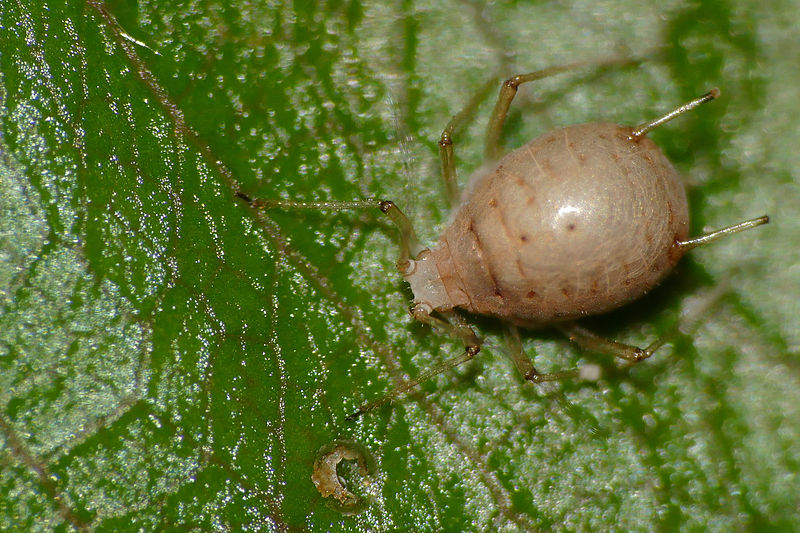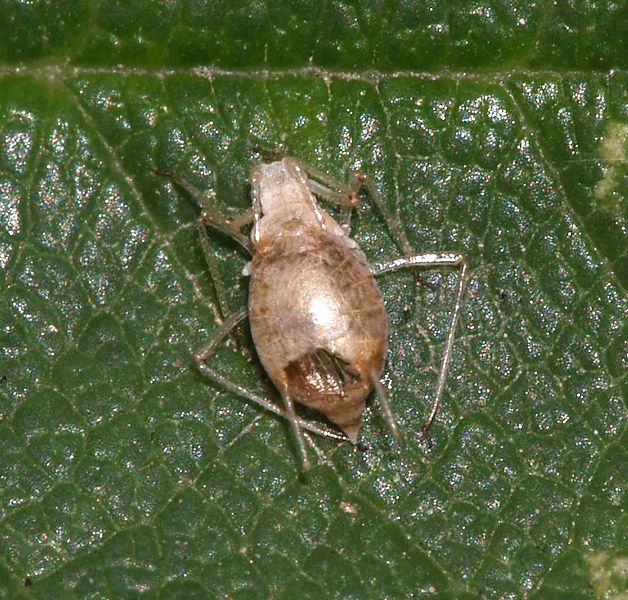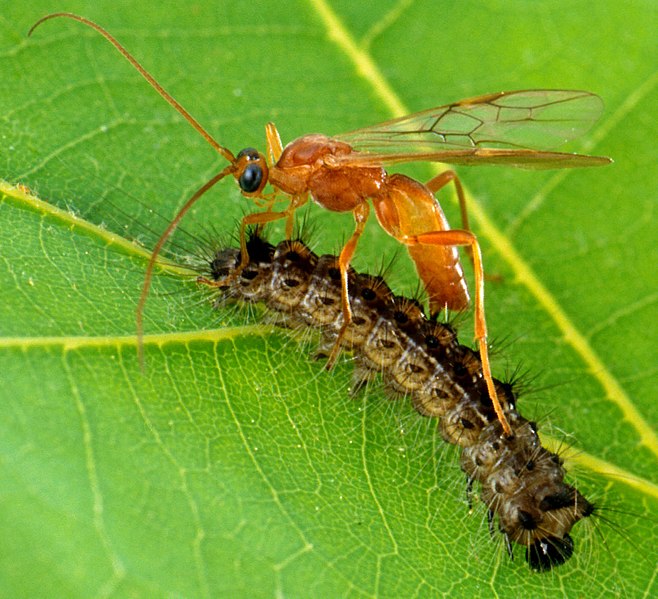There are many insects that are great allies to have in the garden. They comprise a group of insects we call beneficial insects because when there are enough, and a good variety of them, they keep pest populations in check. So while the pests are busily chewing on leaves or sucking out the juices of the leaves and roots of our vegetables, fruits, and ornamental plants, and proliferating while they’re at it, the “beneficials” are scouting the landscape looking for what all animals need: food and shelter. The beneficial insects, in one way or another, prey on pest insects.
So, we actually need pests. And we need enough of them to feed those beneficials. So when you first spot a pest infestation, it is wise to not run for any pest control sprays, organic or not, but instead wait and watch to see if anyone shows up to feast on your pest. So if you notice an aphid infestation, wait to see if you see some ladybugs or maybe just their larvae, which look like little orange and black alligators, or their eggs, which look like little rows of orange footballs standing on end on the underside of leaves. If you try to eliminate the beneficials’ food source, you will not establish a population of them.
There are always fewer predators than prey. It’s like a pyramid, many prey feed fewer predators. So you need more pest insects than their predators, beneficials, to achieve the base of that pyramid. If there are not enough pests, the beneficials will not stick around and not breed in your garden. There is always a lag time between outbursts of pests and populations of predators.
There is usually about 10-15% damage on plants before it becomes noticeable to us humans. Above that we may panic and depending on the plant and the severity of the damage, we may indeed want to seek some help in minimizing a pest population. Do so with an organic product, so that it is not toxic to everyone, and work only on the worst problem, not everything. But if you strive to achieve a good beneficial insect population, over time the balance improves and your pest problems decrease.
Striving to achieve a good population of beneficial insects is actually easy, fun, and pretty. Insects lead complicated lives, for they have a variety of stages, few of which resemble the other. So while the “beneficial” ones prey on our pests at one or more stages of their lives, another stage, usually the adult, needs pollen and nectar…flowers! What fun, planting flowers is a way to bring in the good bugs to our garden!
There are certain types of flowers that do the most good to feed our desired insects. One of the most important things needed is plants that flower throughout the season, early spring through as late into fall as possible. (If you’ve been reading my articles lately, you would know that this also benefits our native bee populations- the best pollinators we have!)
There are certain types of flowers that are most useful to our beneficials. Those that are small and relatively open are best; flowers from the Asteraceae family, which include sunflowers, cosmos, daisies, zinnias, and asters, and those from the Apiaceae family (aka Umbelliferae, think upside down umbrella), which include dill, fennel, cilantro, carrots, parsley, Queen Anne’s Lace-even the weedy one. But many others, like basil, oreganos, buckwheat also will work. A small patch of a mix of annuals and perennials near your garden will go a long way to encourage and feed a burgeoning population of beneficial insects.
A surprisingly good player in the flower department is the sadly maligned dandelion. It is one of the very earliest flowers, and is even an important one to start the feeding of emerging ladybugs in the spring. So you can allow them to flower for a little while and then mow them once the flowers are spent, challenging, I know.
So pests and flowers will feed our beneficials. The next thing they need is shelter. This shelter is especially important for the insects to over-winter. This takes the form of small shrubs, small rock piles, dead leaves and vegetation on the ground, and nearby trees.
Now, just who are these beneficials? The most popular one is the ladybug, aka lady beetle or ladybird beetle. It is one of the predatory insects, which also includes other beetles, flies, and some wasps. These guys munch and chew on their prey.
Then there are the small parasitic wasps and flies. These seek out specific pests, such as the cabbage worm, pierce their victim’s skin and deposit their eggs inside. The eggs then develop and the larvae feast on the living victim until they pupate into adults, whereupon they emerge, the victim is dead, and many new parasitic wasps are ready to mate and hunt down their next victims! I believe this was the inspiration for the movie Alien.


I once read that the most beneficial insects are the tiniest insects, even not visible to the naked eye. So, when my cilantro or parsley goes to flower, I love to sit and stare at the life those flowers have buzzing about. I can notice the tiniest flying things, barely a speck.
The Praying Mantis is a popular insect, however I actually wouldn’t call them beneficial. Yes, they eat other insects, but they eat all insects and they are voracious. They don’t come from here either. But since they eat each other, too, I’m not too worried about them taking over…but I wouldn’t encourage them.
Certainly the pollinators, the whole slew of different ones, are beneficial insects in that they pollinate our plants, and their habitat needs are pretty much the same.
So having a sterile vegetable garden area will leave your plants vulnerable to pest infestation. Establishing a patch of perennial and annual flowers, along with letting a natural mulch accumulate (in other words, don’t keep it too clean!) can attract and supply a diverse population of beneficial insects.
Please note, however, that there seem to always be new pests coming in to the country and state, may not have any natural enemies. This can be a serious problem, especially for larger agricultural systems. Much research is devoted to finding solutions to these new threats.
While the pests are at the bottom of the pyramid, the predators are the next up, and so on up through the whole food chain. Biologist, naturalist, and author E. O. Wilson, when writing about the importance of invertebrates (animals without a backbone), calls them the “little things that run the world”.

